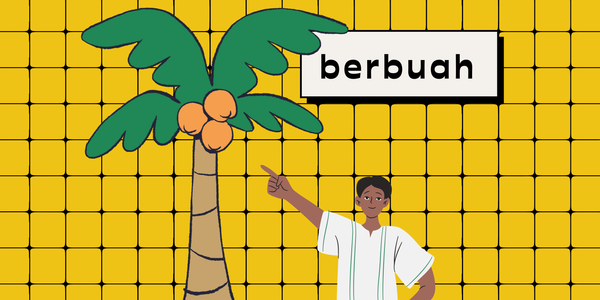Ke? Kepada? Pada?
Are you confused how to use 'ke' and 'kepada'? How are they different? And why is there 'pada'? Read this guide and then try using these words in your conversations.

Noun Prepositions or “Kata Sendi Nama” are words that are placed in front of noun phrases. Today, we will be looking at noun prepositions “ke”, “kepada” and “pada” that could be translated as “to”, “until” or “on/at” in English. Because these three variations are so close in meaning, they are often even incorrectly used by native speakers. So, let’s clear up the confusion!
'Ke'
is used in front of nouns or noun phrases to show location, direction and time or a period of time. For example:
Kapal itu berlayar ke arah barat.
The ship is sailing towards the west.
Saya pernah ke Ukraine.
I have been to Ukraine.
Dia selalu tidur dari pagi ke malam.
He/she always sleeps from morning till night.
Budiman merantau ke kota untuk mencari rezeki.
Budiman moved to the city in order to earn a living.
Lee Zii Jia pulang ke tanah air dengan bangganya.
Lee Zii Jia returned to his motherland with pride.
Acara akan berlangsung dari 10 pagi ke 5 petang.
The event will convene from 10 in the morning until 5 in the evening.
Pepatah ini diturunkan sejak dahulu ke sekarang.
This saying has been passed down since the olden days until now.
'Kepada'
Is placed in front of noun words or noun phrases to state a target of an action that refers to humans, animals, abstract elements and institutions related to humans.
Coklat tidak patut diberikan kepada anjing.
Chocolates should not be given to dogs.
Sepucuk surat cinta dikirim kepada Nandhini.
A love letter was sent to Nandhini.
Pendedahan kepada pelbagai budaya boleh meluaskan pandangan.
Exposure to different cultures can widen one’s horizons.
Saya telah menulis aduan kepada kelab malam itu.
I have written a complaint to the nightclub.
“Kepada” is also used to state a division and a changing condition.
Kanak-kanak itu telah berpecah kepada lima kumpulan.
The kids have been divided into five groups.
Suhu pada waktu malam menurun kepada 20°C.
The temperature at night has decreased to 20°C.
'Pada'
is used in front of nouns or noun phrases to describe time and place.
Salmah akan berkahwin pada musim panas ini.
Salmah will be getting married this summer.
Tok Mek akan tiba pada malam esok.
Tok Mek will arrive tomorrow night.
Sila pulang ke rumah pada pukul 5 petang.
Please go home at 5PM.
Pada waktu itu, dia sedang berjimba.
At that time, he/she was having fun.
“Pada” is also used in front of nouns that show the location of a certain verb.
Sila lukis pada halaman ini.
Please draw on this page.
The ball is stuck on the tree.
Bola itu tersangkut pada pokok.
Dia merapatkan mukanya pada cermin.
He/she pressed his/her face to the mirror.
A common phrase in Malay to describe having something is the “ada pada” combination. When ‘pada’ is used after ‘ada’, it must be followed by a nouns that refers to humans or animals.
Beg Hermes itu ada pada Rosa.
Rosa has the Hermes bag.
The Hermes bag is with Rosa.
Kecerdikan ada pada Ali.
Ali has the smarts.
Ali is smart.
Take note, “pada” cannot be used in front of a noun that is a target of a verb. For example:
(X) Hadiah ini akan dihantar pada Munah.
(✓) Hadiah ini akan dihantar KEPADA Munah.
This gift will be sent to Munah.
‘Pada’ can also mean “to me” or “in my opinion”:
Pada pendapat saya, dunia akan kiamat esok.
In my opinion, the world will end tomorrow.
Pada saya, dialah lelaki paling kacak di dunia.
To me, he is the handsomest man in the world.
While the usage of each preposition is quite complicated, the best way is to quickly learn them is to remember these three things:
Ke is for location and time.
Kepada is for the target of a verb.
Pada is for descriptions of time and place, and humans/animals for the phrase “ada+pada”.
As I’ve said, they can be quite confusing! Don’t stress too much about it and go through each usage one by one. When the occasion to use any of these arrive, just choose the most natural-sounding. It only matters most when you want to write, so don’t be afraid to make mistakes! Comment down below if you have any questions :)
Reference: Tatabahasa Dewan Ketiga, Dewan Bahasa dan Pustaka 2008
Read the next article in this series ➡️





